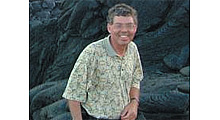
Doug Lung A white paper study produced by ATDI, Ltd on behalf of GSMA, the organization representing the interests of mobile operators worldwide, indicates that LTE mobile signals and existing and planned television services could coexist, provided that measures are taken to mitigate interference between the two services.
“Mobile operators want to work closely with ANATEL [the Brazilian telecommunications agency] and the broadcast community to explore how their respective services can best coexist and ensure the optimum experience of LTE mobile services and television viewing for the people of Brazil,” said Tom Phillips, the chief regulatory officer at GSMA. “Through rigorous modeling, the study shows that careful planning of spectrum usage can mitigate potential interference from mobile and broadcast services operating in close proximity to one another.”
The report acknowledges that some portion of the population would receive interference, but the interference could be reduced by applying suitable mitigation techniques. The study predicted “generally fewer than 10,000 people” in Brasalia and Campinas could be affected and through mitigation the “issue could be virtually eliminated.”
The paper stated that applying filters to ISDB-T TV transmitters and LTE base stations to reduce interference could significantly lower the probability of out-of-band and blocking interference.
“We appreciate the concerns around potential interference between mobile and broadcast services, which we aim to address through this new study,” Phillips said. “However, these concerns should not overshadow the undeniable socio-economic benefits that the Digital Dividend spectrum for mobile will bring. Through mitigation, we are working to ensure the successful coexistence of LTE mobile and television services for the enjoyment of the people of Brazil.”
The ATDI White Paper shows a 5 MHz guard band between the LTE uplink and the nearest TV channel. The charts in the report show a “low” probability of blocking interference from LTE to ISDB-T reception before mitigation, and no interference after mitigation. The worst case interference, not mentioned in the press release, is expected to be “relatively low with typically less than 50,000 [affected] for Sao Paulo.”
The report noted that ISDB-T interference into LTE is more of a problem, with a “high” probability of interference due to out-of-band emissions and blocking with an ISDB-T antenna 150m and an LTE base station antenna at 30m before mitigation. The probability is reduced to “low” after mitigation.
According to the study, Analog TV fares much worse than ISDB-T, with a medium probability of interference to analog TV due to out-of-band emissions from a 30 meter LTE antenna before mitigation that only drops to “low” after mitigation.
Interference from analog TV into LTE seems to be a bigger problem, with out of band emissions from an analog TV transmitter into a 30 meter LTE antenna having a “high probability of interference” before mitigation that only drops to “medium” after mitigation.
The white paper offers a possible solution for this: “It was additionally recommended to adopt post dividend plans that avoid high power emissions in the upper TV channels (especially Channels 48-51). This planning approach would help with coexistence as the potential interference problem is more acute where frequency separation to the lowest LTE band is small. The advantage of this mitigation is that it costs nothing to implement.”
The discussion of the mitigation options indicates there may not be a simple solution. The study states:
“Of the mitigation techniques considered filters will provide the most significant benefit but also likely to be the most expensive to universally apply.
“The use of orthogonal polarization would give a benefit but is not considered as viable due to the additional cost and complexity that the mobile operators would incur.
“Where interference is experienced by the TV receiver there are a number of possible mitigation options such as receiver filtering, improved antenna or use of a better quality receiver. These would need to be investigated on a case by case basis to try and resolve any local interference issues but would be relatively cheap to implement.”
The report doesn't provide any details on the signal levels used for the analysis or the assumed performance of the receivers, both LTE and TV, used to generate the interference tables.
Even though this study was funded by GSMA and represents the interests of mobile operators, it shows LTE and broadcast TV actually can't coexist without interference unless steps are taken to mitigate the interference and that could involve limiting the power of broadcast TV stations operating on channels close to those used for LTE.
The professional video industry's #1 source for news, trends and product and tech information. Sign up below.

Doug Lung is one of America's foremost authorities on broadcast RF technology. As vice president of Broadcast Technology for NBCUniversal Local, H. Douglas Lung leads NBC and Telemundo-owned stations’ RF and transmission affairs, including microwave, radars, satellite uplinks, and FCC technical filings. Beginning his career in 1976 at KSCI in Los Angeles, Lung has nearly 50 years of experience in broadcast television engineering. Beginning in 1985, he led the engineering department for what was to become the Telemundo network and station group, assisting in the design, construction and installation of the company’s broadcast and cable facilities. Other projects include work on the launch of Hawaii’s first UHF TV station, the rollout and testing of the ATSC mobile-handheld standard, and software development related to the incentive auction TV spectrum repack. A longtime columnist for TV Technology, Doug is also a regular contributor to IEEE Broadcast Technology. He is the recipient of the 2023 NAB Television Engineering Award. He also received a Tech Leadership Award from TV Tech publisher Future plc in 2021 and is a member of the IEEE Broadcast Technology Society and the Society of Broadcast Engineers.
